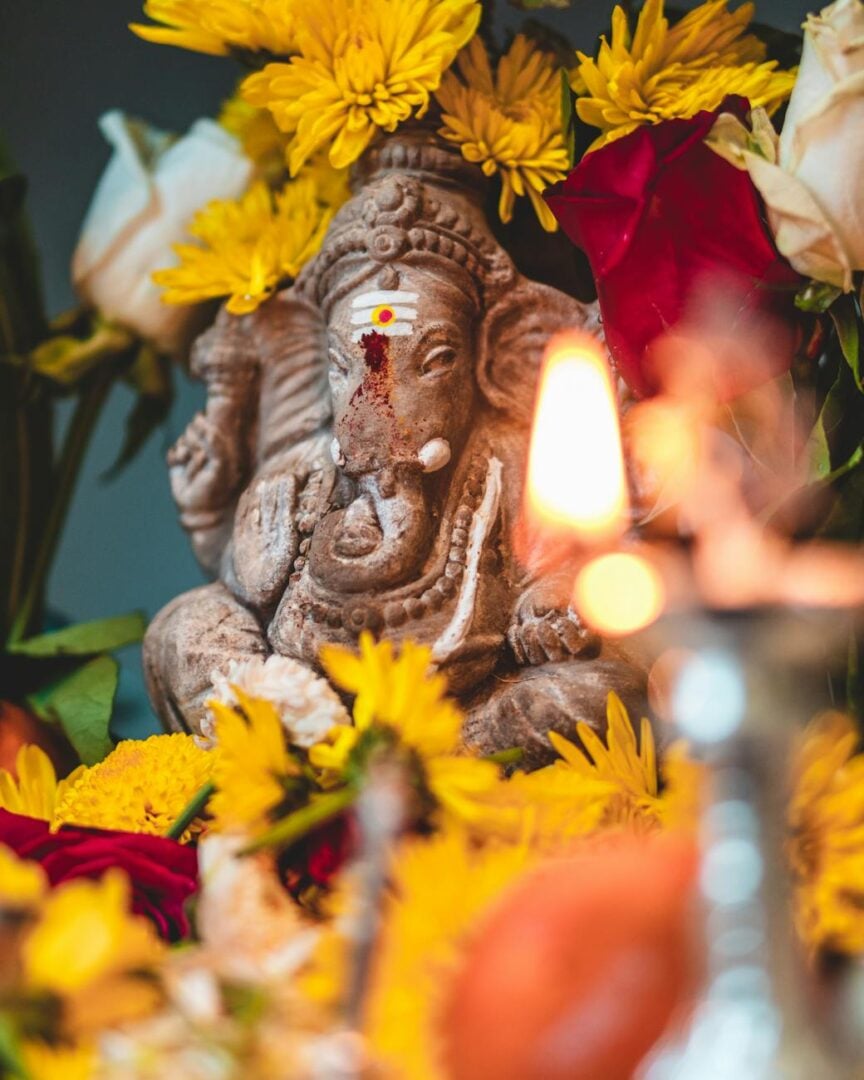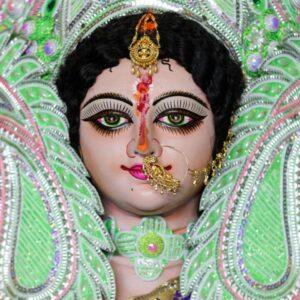
Lord Ganesha, revered across India as the remover of obstacles and the harbinger of auspicious beginnings, holds a paramount place in Hindu belief. His multifaceted nature is reflected in his numerous forms, each catering to specific aspects of life and spirituality. This blog delves into the rich tapestry of Ganesha’s divine incarnations, uncovering the unique attributes and blessings they symbolize.
A Legacy Etched in History and Culture
The origins of Lord Ganesha can be traced back to ancient Hindu scriptures. Revered texts like the Rigveda, Mahabharata, and Puranas highlight his significance in Hindu cosmology. Over millennia, Ganesha worship evolved from Vedic rituals to the elaborate practices we see today. His depiction, too, varies significantly across different regions of India, showcasing the dynamic nature of faith and cultural interpretation.
Ganesha’s most striking feature, his elephant head, symbolizes wisdom, knowledge, and the power of discernment. Major festivals like Ganesh Chaturthi are vibrant celebrations of his presence, observed with immense devotion and joy. His influence extends far beyond rituals, permeating Indian art, literature, and folklore.
The Ten Principal Avatars of Lord Ganesha
Similar to Lord Vishnu’s Dashavatara, Ganesha, too, manifests in various avatars, each embodying specific qualities:
- Vakratunda: With a curved trunk, Vakratunda is invoked to remove obstacles and pave the path towards success.
- Ekadanta: The single-tusked form, Ekadanta, represents focused intention, sacrifice, and unwavering strength.
- Mahodara: Mahodara, with his large belly, embodies contentment, generosity, and the abundance of nature.
- Gajanana: Gajanana, the elephant-faced form, signifies wisdom, intelligence, and the power of knowledge.
- Lambodara: This form, with its prominent pot-belly, symbolizes the vastness of the cosmos and the infinite potential within.
- Dhumravarna: Dhumravarna, the smoke-colored form, embodies humility, detachment, and the transient nature of the material world.
- Vikata: The misshapen form, Vikata, serves as a protector against evil, warding off negative energies.
- Vighnaraja: As the king of obstacles, Vighnaraja possesses the power to both create and remove hindrances, reminding us of life’s inherent duality.
- Vinayaka: Vinayaka, the lord of knowledge and enlightenment, guides devotees towards wisdom and self-realization.
- Ganapati: Leading the ganas (divine beings), Ganapati represents order, discipline, and the harmonious functioning of the universe.
Regional Interpretations and Artistic Expressions
The beauty of Ganesha worship lies in its diversity. His depiction varies significantly across Indian states, reflecting local customs and artistic traditions:
- Maharashtra: The Dagdusheth Halwai Ganapati, known for its grandeur, is particularly popular.
- Tamil Nadu: Pillaiyar, as he is known in Tamil Nadu, possesses unique features and is deeply ingrained in local culture.
- Bengal: Bal Ganesha, the child form, is especially favored during Durga Puja celebrations.
- Kerala: In Kerala, Ganapati is revered as Vigneshwara, the remover of obstacles.
- Rajasthan and Gujarat: Folk art representations in these states showcase distinct styles and vibrant colors.
Each region infuses its cultural nuances into Ganesha’s portrayal, demonstrating the deep connection people share with this beloved deity.
Deciphering the Symbolism and Philosophy
Every element of Ganesha’s iconography carries profound meaning:
- Large Ears: Symbolizing attentive listening, Ganesha’s large ears represent his receptivity to prayers and his ability to absorb wisdom.
- Broken Tusk: This signifies sacrifice, selflessness, and the willingness to overcome ego for a greater purpose.
- Versatile Trunk: The trunk, with its ability to grasp and move objects, represents adaptability, efficiency, and the power of discernment.
- Mouse (Vehicle): This seemingly insignificant creature represents humility, reminding us to keep our desires in check.
- Modak (Sweet): The modak symbolizes the rewards of spiritual practice – sweetness, joy, and fulfillment.
- Pot-Belly: Representing the vastness of the universe, it reminds us of the infinite possibilities that exist within and around us.
Ganesha’s form embodies a harmonious balance between the material and spiritual realms. He serves as a guide, encouraging us to seek harmony in all aspects of life.
Ganesha’s Enduring Relevance in the Modern World
Even today, Lord Ganesha continues to inspire and guide:
- Art, Music, Literature: Modern artists draw inspiration from his forms, reinterpreting his symbolism in contemporary works.
- Digital Age: Online pujas and virtual celebrations make his presence accessible to devotees worldwide, transcending geographical boundaries.
- Eco-Friendly Idols: Growing awareness has led to movements promoting sustainable practices during Ganesh Chaturthi, ensuring minimal environmental impact.
- Global Spread: The Indian diaspora has played a crucial role in keeping Ganesha worship alive globally, fostering cultural exchange and understanding.
- Meditation and Mindfulness: His symbols serve as aids for focus and concentration, guiding individuals towards inner peace and spiritual growth.
- Yoga and Wellness: Many yoga practices incorporate Ganesha’s teachings, recognizing the importance of balance, discipline, and self-awareness.
Ganesha’s relevance transcends time, seamlessly bridging tradition with contemporary life. He remains a source of comfort, inspiration, and guidance for millions around the world.
How Poojn.in Can Enrich Your Spiritual Journey
Poojn.in offers a diverse range of products to help you honor and connect with Lord Ganesha in his many forms. Here’s how we can assist you:
Authentic Ritual Items:
- Ganesha Idols: Choose from a meticulously crafted selection of idols, perfect for your home altar or temple.
- Puja Kits: Our comprehensive puja kits include all the essential items needed for rituals, such as incense sticks, camphor, and kumkum.
- Modak Moulds: Prepare Lord Ganesha’s favorite sweet with our specially designed modak moulds.
Books and Guides:
- Scriptures and Texts: Deepen your understanding of Lord Ganesha’s different avatars and their significance with our collection of scriptures and texts.
- How-to Guides: Our step-by-step guides provide clear instructions for performing various rituals dedicated to Lord Ganesha.
Festival Essentials:
- Decorative Items: Enhance your festive celebrations with our beautiful torans, rangoli powders, and other decorative items.
- Eco-friendly Idols: Choose from our range of eco-friendly idols made from natural materials, ensuring a sustainable Ganesh Chaturthi celebration.
Visit Poojn.in to explore our complete product range and make your worship experience truly meaningful.
Conclusion: Embracing Ganesha’s Blessings
Exploring the many forms of Lord Ganesha is an enriching journey into the heart of Hindu wisdom, culture, and spirituality. Each avatar offers unique blessings and insights, guiding us through life’s challenges and triumphs. Whether you seek Vakratunda’s assistance in removing obstacles or Vinayaka’s guidance on the path to enlightenment, Ganesha’s presence serves as a source of unwavering comfort and inspiration.
In today’s fast-paced world, Lord Ganesha stands as a beacon of hope and wisdom. His timeless teachings and symbolism remind us of the importance of balance, humility, and unwavering devotion. By honoring Ganesha in our homes, festivals, and daily lives, we keep alive a rich tradition that nourishes our souls and connects us to our cultural heritage.
May Lord Ganesha bless you with wisdom, prosperity, and enduring peace.
Frequently Asked Questions About Lord Ganesha’s Avatars
What are some of the lesser-known forms of Lord Ganesha?
Beyond the ten principal avatars, Lord Ganesha is believed to manifest in 32 distinct forms. Some of the lesser-known but equally powerful forms include Bala Ganapati, known for his childlike innocence, Taruna Ganapati, representing youthful energy, and Bhakti Ganapati, embodying devotion and surrender.
Why does Lord Ganesha take on so many different forms?
Each avatar of Lord Ganesha serves a unique purpose, reflecting the multifaceted nature of divinity and its manifestation in the universe. Some forms are invoked to remove obstacles, while others are worshipped to attract prosperity, wisdom, or protection. The diversity of forms allows devotees to connect with Ganesha in a way that resonates with their individual needs and aspirations.
Is there a specific form of Ganesha that is considered most auspicious?
All forms of Lord Ganesha are considered auspicious and worthy of reverence. The choice of which form to worship often depends on the specific blessing sought or the individual’s personal connection with a particular aspect of Ganesha’s divine nature.
Can you elaborate on the significance of Bala Ganapati?
Bala Ganapati, the child form, represents purity, innocence, and the boundless joy of existence. He is often worshipped by those seeking happiness, good health, and protection for children. His playful nature reminds us to approach life with a sense of wonder and lightheartedness.
How does Taruna Ganapati differ from Bala Ganapati?
While Bala Ganapati embodies childlike innocence, Taruna Ganapati represents the dynamism and vigor of youth. He is the embodiment of energy, enthusiasm, and the drive to achieve one’s goals. Devotees seeking strength, vitality, and success in their endeavors often pray to Taruna Ganapati.
What is the symbolism behind Bhakti Ganapati?
Bhakti Ganapati, as his name suggests, embodies devotion, surrender, and the path of love and faith. He is often depicted with a coconut and a pot of rice, symbolizing simplicity, purity, and the offering of oneself to the divine. Worshipping Bhakti Ganapati helps cultivate devotion, humility, and a deep connection with the divine.
Is it appropriate to worship all forms of Lord Ganesha?
Yes, devotees are free to worship any and all forms of Lord Ganesha. While each form may have specific rituals and mantras associated with it, the ultimate aim of all worship is to connect with the divine, seek blessings, and remove obstacles on the path to spiritual growth.
Which form of Ganesha is particularly helpful for overcoming challenges?
Vighnaharta Ganapati is specifically renowned for his ability to remove obstacles and pave the way for success. His name itself translates to “remover of obstacles,” making him a source of strength and solace for those facing challenges in life.
Are there specific days or occasions dedicated to worshiping particular forms of Ganesha?
While Ganesh Chaturthi is a celebration of all forms of Ganesha, some devotees follow specific rituals and practices on different days of the week or year to honor particular avatars. For instance, Tuesdays are generally considered auspicious for Ganesha worship, and certain lunar days might be associated with specific forms.
Remember, the most important aspect of worship is the sincerity and devotion with which it is offered. Lord Ganesha, in all his divine manifestations, blesses those who approach him with a pure heart and unwavering faith.

